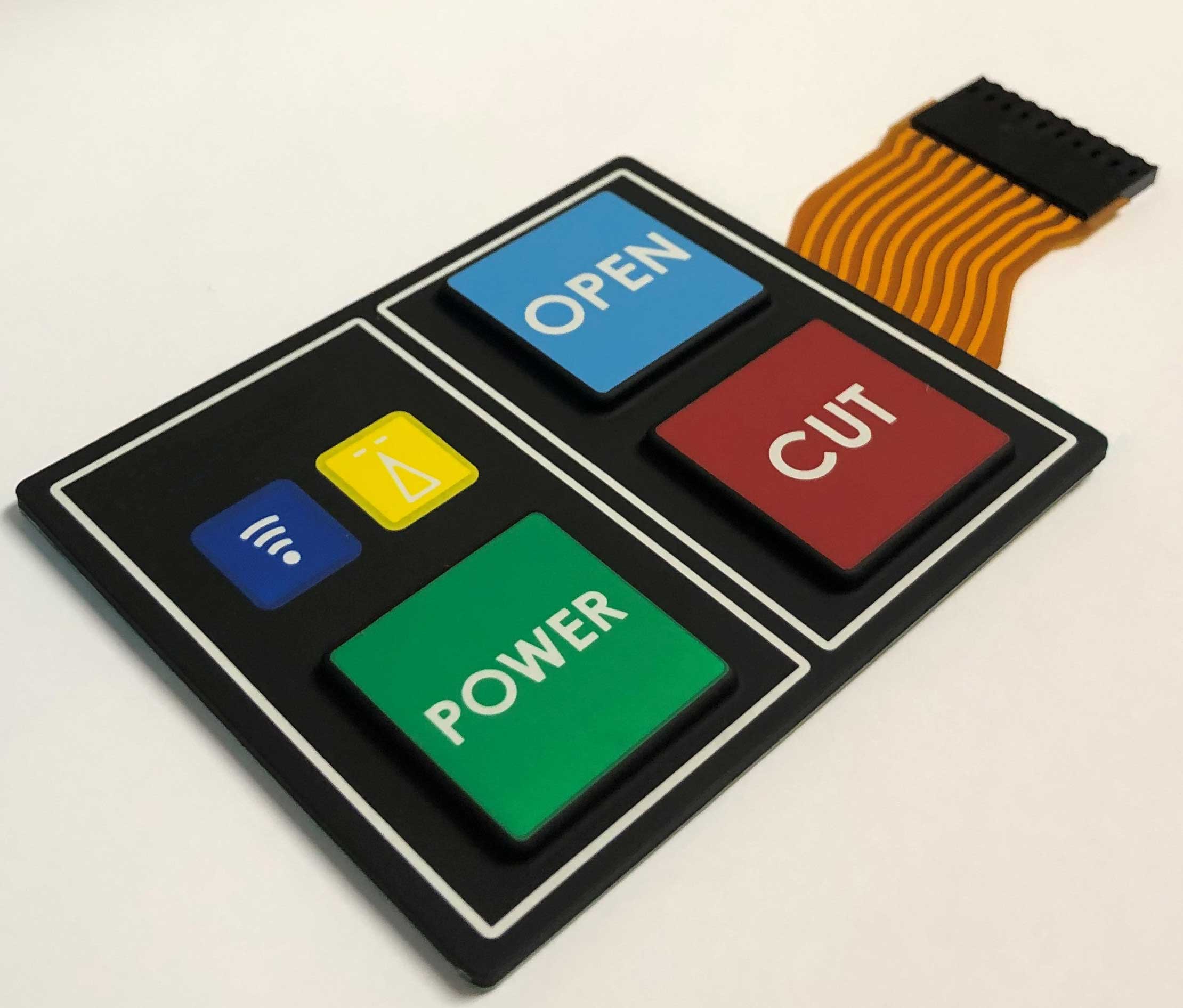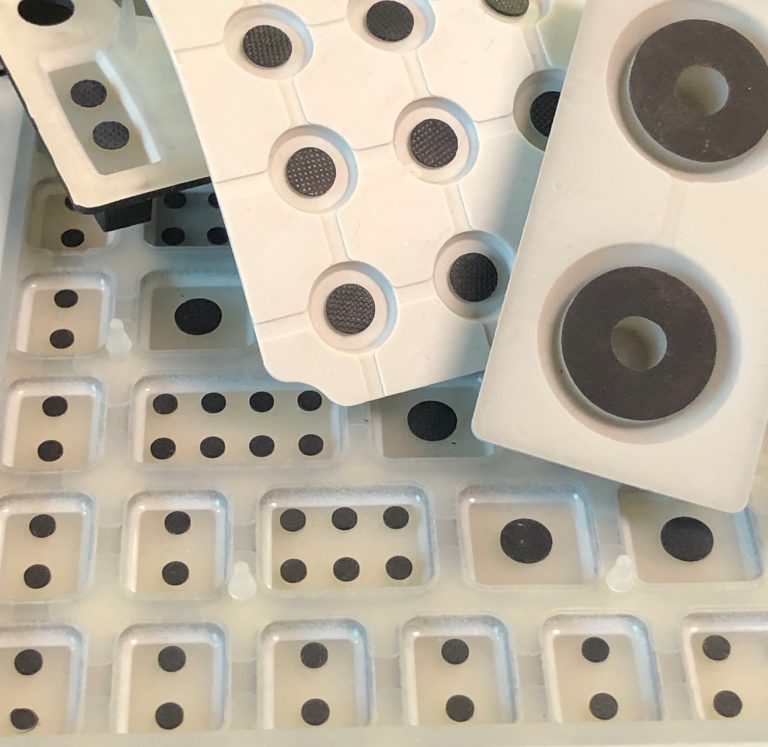8 fields that depend heavily on Rubber Keypads for critical functions
Exploring the Manufacturing Process Behind Rubber Keypads and Their Relevance in Modern Tools
Rubber keypads are essential in the capability of modern gadgets. Their manufacturing procedure includes careful choice of materials and precise methods. Keypads are developed to enhance user communication while ensuring durability and dependability. Comprehending just how these elements are made exposes their importance throughout numerous applications. What variables contribute to their effectiveness, and how do these elements influence user experience? The solutions may reshape understandings of this everyday modern technology.
Summary of Rubber Keypads and Their Applications

Rubber keypads are flexible components extensively used in numerous electronic gadgets, ranging from consumer electronics to industrial equipment. Their design permits a responsive action, making them an optimal option for applications requiring individual communication. Commonly discovered in items such as remote controls, calculators, and clinical gadgets, rubber keypads assist in convenience of use and ease of access.
In commercial settings, they serve crucial functions in equipment and control board, where toughness and resistance to environmental elements are crucial. The non-slip surface boosts grip, promoting dependability popular problems. Furthermore, their light-weight nature and personalized forms enable manufacturers to develop customized solutions that fit certain requirements. With improvements in modern technology, rubber keypads remain to progress, incorporating functions like backlighting and enhanced sensitivity. Generally, their flexibility and useful advantages contribute greatly to the efficiency of numerous devices throughout numerous sectors.
Materials Made Use Of in Rubber Keypad Manufacturing
Keypad making relies on a choice of materials that improve both capability and toughness. The main material made use of in the manufacturing of rubber keypads is silicone rubber, recognized for its superb strength and adaptability. This product permits keypads to hold up against repeated pushing without shedding form or performance. Additionally, thermoplastic elastomers (TPE) are frequently used due to their simplicity of molding and ability to provide a soft-touch feel.
Tinting representatives, such as pigments, are included to assure lively, resilient tones that boost visual allure. Ingredients like anti-UV agents and fire retardants may be blended into the rubber to enhance weather resistance and safety and security conformity. The option of products straight impacts the keypad's responsive reaction, durability, and total performance in numerous tools. Eventually, the cautious option of these components is essential for the manufacturing of high-grade rubber keypads that satisfy customer and industry demands.
The Design Process of Rubber Keypads
When creating rubber keypads, the layout process plays a crucial function in identifying functionality and individual experience. Developers begin by specifying the keypad's planned usage, taking into consideration aspects such as the tool it will certainly accompany and the target customer group. This preliminary phase includes sketching formats that focus on ergonomic aspects, making certain the keys are conveniently accessible and suitably spaced.
Next off, designers concentrate on the responsive feedback preferred from the keypads, which affects the selection of products and essential forms. Prototyping is vital in this stage, allowing developers to test various layouts for comfort and responsiveness.

Manufacturing Techniques for Rubber Keypads
The production process for rubber keypads involves a collection of accurate techniques that ensure high quality and performance. Liquid silicone rubber (LSR) is commonly utilized due to its longevity and versatility. The process starts with mixing the raw products, including silicone, colorants, and curing agents. This mixture is then infused right into molds designed to form the keypads accurately.
Complying with shot, the shaped keypads go through healing, a home heating process that solidifies the product (Rubber Keypads). This is typically carried out in a press, making certain the keypads accomplish the wanted firmness and strength

Quality Control Steps in Manufacturing
To assure that rubber keypads satisfy high requirements of high quality and functionality, strenuous top quality control steps are executed throughout the production procedure. These measures begin with raw material evaluation, ensuring that only the highest-grade elastomers are made use of. During the production phase, operators perform normal checks to keep an eye on parameters such as temperature, pressure, and mixing times, crucial for accomplishing constant item quality.
Post-production, each set of keypads undertakes complete testing, including tactile response analyses and durability tests to examine performance under various problems. Aesthetic examinations are additionally carried out to recognize any type of problems, such as bubbles or inconsistencies in structure. In addition, compliance with industry requirements is confirmed, making certain that the keypads satisfy safety and security and performance criteria.
The Role of Innovation in Keypad Growth
Technology plays a crucial function in the development of rubber keypads by making it possible for innovative production strategies that improve accuracy and efficiency. In addition, ingenious product choice enables for improved sturdiness and responsiveness in keypad efficiency. These improvements not just streamline production but additionally raise the total quality of the end product.
Advanced Production Techniques
Innovations in manufacturing methods change the manufacturing of rubber keypads, enhancing both effectiveness and accuracy. Technologies such as injection molding and 3D printing have changed traditional processes, enabling manufacturers to produce intricate styles with minimized waste and improved turn-around times. Automation plays an important duty in this development, enhancing production line and minimizing human mistake. In addition, computer-aided design (CAD) software allows for intricate modification, ensuring that keypads meet particular individual needs. Quality control steps have also advanced, including real-time monitoring systems that identify defects early in the production cycle. These informative post advancements not only improve the durability and functionality of rubber keypads yet likewise support the growing demand for personalized solutions in various industries, from consumer electronic devices to auto applications.
Cutting-edge Product Choice
The advancement of producing methods has actually led the method for cutting-edge material selection in rubber keypad advancement. Advances in polymer scientific research page have presented products that improve toughness, adaptability, and responsive responses. Manufacturers now utilize polycarbonate elastomers (TPE) and silicone substances, which offer exceptional resistance to use and environmental aspects. These products enable the development of keypads that can endure long term usage while keeping visual allure. Furthermore, the assimilation of ingredients and finishes boosts performance, such as boosting grip and lowering rubbing. The choice of products is important, as it straight influences the performance and longevity of keypads in different devices, from consumer electronics to commercial devices. This cutting-edge strategy proceeds to shape the future of keypad layout and usability.
The Impact of Rubber Keypads on Individual Experience
Rubber keypads greatly affect customer experience via their improved responsive response, which permits more exact communication. Additionally, their resilience and durability add to consistent performance gradually, lowering the demand for frequent replacements. This combination of functions makes rubber keypads a recommended option in numerous applications, inevitably influencing user contentment.
Enhanced Tactile Action
Enhancing tactile feedback greatly influences individual experience, particularly in tools that depend on keypads for interaction. Rubber keypads offer a distinct combination of softness and strength, permitting users to really feel distinctive responses with each press. This comments strengthens a feeling of control and accuracy, vital in applications varying from smartphones to industrial equipment. Users often report greater complete satisfaction and efficiency when engaging with tools that include well-designed rubber keypads, as they help with quicker and extra precise input. Additionally, the ergonomic design of these keypads can lower finger exhaustion, advertising longer usage periods without discomfort. Overall, the boosted responsive reaction given by rubber keypads substantially adds to an extra instinctive and pleasurable individual experience in modern innovation.
Resilience and Long life
A key facet of customer experience with rubber keypads depends on their resilience and durability. These keypads are developed to withstand comprehensive usage, standing up to deterioration that frequently influences other materials. The durable nature of rubber warranties that keypads preserve their functionality and look over time, which is crucial for tools frequently made use of in numerous settings. Individuals profit from the reliability of rubber keypads, as they can withstand direct exposure to dust, temperature, and dampness fluctuations without weakening. This durability not just enhances user complete satisfaction however additionally minimizes the need for frequent substitutes, ultimately adding to cost-effectiveness for find here suppliers. Essentially, the durability of rubber keypads significantly affects the general efficiency and customer experience in modern-day tools.
Often Asked Inquiries
How Much Time Do Rubber Keypads Commonly Last in Devices?
Rubber keypads generally last between 5 to ten years, depending on usage, ecological variables, and quality of materials used (Rubber Keypads). Routine damage can shorten their lifespan, influencing functionality and user experience in time
Can Rubber Keypads Be Custom-made for Particular Applications?
Rubber keypads can without a doubt be customized for specific applications, permitting changes in size, color, form, and structure. This versatility enables manufacturers to develop tailored services that meet varied individual requirements and enhance capability in numerous tools.
Are Rubber Keypads Eco-friendly?
Rubber keypads are frequently not considered eco pleasant as a result of their petroleum-based materials. Improvements in sustainable production methods and the growth of bio-based alternatives are gradually boosting their ecological influence in numerous applications.
What Prevail Problems Faced Throughout Rubber Keypad Manufacturing?
Usual issues dealt with throughout rubber keypad manufacturing include irregular worldly quality, mold flaws, incorrect treating times, attachment failures, and challenges in achieving specific tactile feedback. These troubles can result in reduced product efficiency and client frustration.
How Do Rubber Keypads Contrast to Various Other Sorts Of Trick Changes?
Rubber keypads offer a softer feel and quieter operation compared to mechanical switches, which offer tactile responses. Rubber keypads might wear out faster and do not have the accuracy that some users prefer in high-performance applications.
The main product used in the production of rubber keypads is silicone rubber, understood for its superb durability and versatility. When producing rubber keypads, the design process plays a necessary role in figuring out capability and customer experience. Rubber keypads substantially affect user experience through their boosted responsive action, which enables for more precise communication. Users usually report better contentment and efficiency when communicating with tools that include properly designed rubber keypads, as they facilitate quicker and extra precise input. A crucial facet of user experience with rubber keypads exists in their durability and long life.